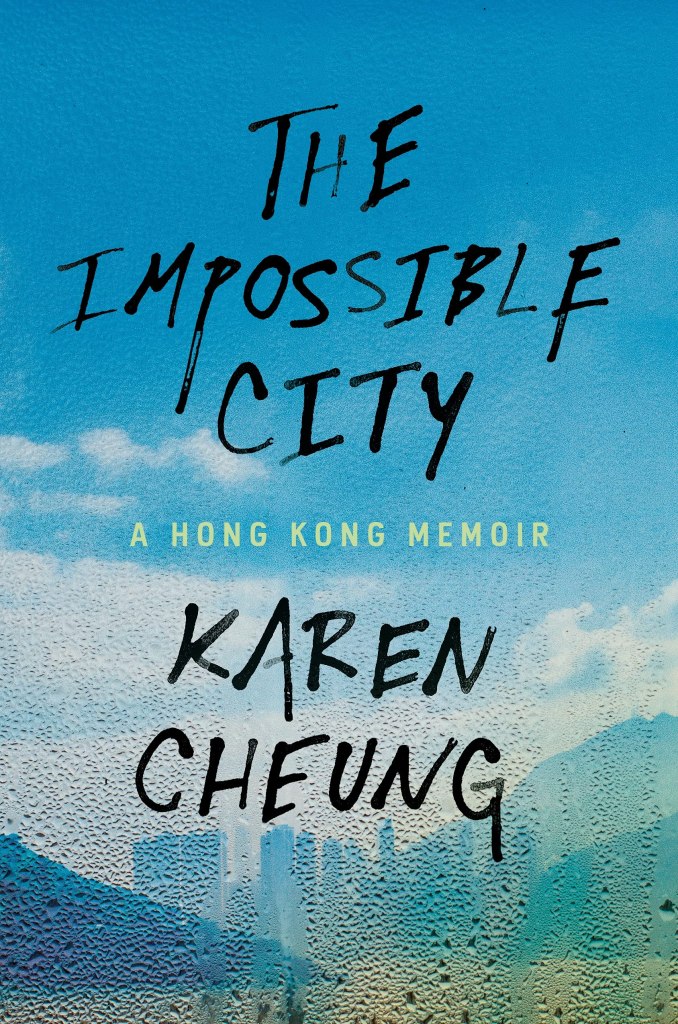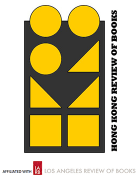Shui-yin Sharon Yam reviews Karen Cheung’s poignant memoir about life in Hong Kong.
Karen Cheung, The Impossible City: A Hong Kong Memoir (Random House, 2022), 352pp.
“What is writing good for if we can’t write a way out of this darkest timeline?” (264), Karen Cheung asks in this hauntingly moving memoir of her life in Hong Kong over these last two decades. Since the passage of the National Security Law (NSL) in the summer of 2020, “Hong Kong is dead” has become a common refrain in international news. Amid constant crackdowns and arrests, Hong Kong no longer fits the image of a vibrant cosmopolitan city where foreign corporations, tourists, and expatriates can enjoy unbridled freedom. Beginning with a scathing and acute interrogation of this narrative, Cheung’s memoir cannot write Hong Kong out of its darkest timeline, but it has succeeded in lifting up the deeds and voices of Hongkongers who have always dared to imagine and work towards a better collective future for the city.
Part personal narrative and part reportage, The Impossible City covers the contentious period between 1997 to 2020, during which Hongkongers experienced the return of sovereignty to China, waves of student activism, the Umbrella Movement, the 2019 Anti-Extradition Bill protests, and the implementation of the NSL. The Impossible City is simultaneously nostalgic, courageous, and honest, as it offers an unflinching look at how Cheung and Hongkongers from different positionalities navigated such a politically tumultuous period. While trying to survive and resist in a city that is rapidly disappearing under the trifecta of political suppression, capitalism, and neoliberalism, Cheung and the Hongkongers she delicately narrates are also grappling with an ambiguous form of grief that escapes language. As Cheung laments, “Losing a city is much more intangible. I don’t know where to find the language to describe the grief I feel when I walk through the city and see phantoms of riot police spilling from the escalators of the malls and street corners” (283). Even so, by articulating how her material and affective experience of the city has shifted over the years, Cheung is offering those who love Hong Kong a much-needed language and narrative to make sense of the new reality.

As a former journalist, Cheung is adept in telling not just her own stories, but also the stories of Hong Kong, and of Hongkongers on the margin who dare to defy the hegemonic forces of capitalism and the state as they look to create a more just and humane city. Cheung deftly weaves together these narratives to demonstrate how the quotidian and personal are always already intimately connected to the public and political. In the first half of the book, Cheung paints a vivid picture of her troubled childhood, and her experience straddling the two parallel universes of Hong Kong. While she attended a prestigious international school, her living environment and class background differed significantly from her wealthy peers.
Because of her positionality and professional background, Cheung has astute insights into the different facets of Hong Kong – from privileged international school graduates and expatriates to working-class students, journalists, indie musicians and activists. While the former is comprised mainly of “people who have no roots because they are rooted everywhere, [and] have the privilege of not having to root themselves in the place they are at” (184), the latter make do in Hong Kong by creating intimate communities that add humanity and vibrancy to the neoliberal capitalist city where any form of rebellion is staunchly discouraged. Even while she critiques those with privilege who refuse to leave their bubble to concern themselves with local Hong Kong politics, Cheung does not represent the group reductively. Rather, she is careful in highlighting those in the group who try hard to get their peers more involved and invested in a less-than-glamorous version of Hong Kong, a version that is the lived reality of most Hongkongers. Cheung’s nuanced look into the perspectives of different Hongkongers avoids the pitfall of false dichotomies, and in turn adds significant depth to the book.
While The Impossible City is a memoir, it is also a perceptive piece of sociopolitical commentary. In the same breath, Cheung can describe the minute details of a childhood memory, suffused with sensory details, while offering a political critique of capitalism and social class in Hong Kong. By doing so, Cheung elucidates how the forces of transnational capitalism and local oligarchy impact her and other Hongkongers’ everyday life. For example, while the opening of the chapter “22 Roommates” resembles a coming-of-age personal narrative, Cheung swiftly mounts a cogent critique of housing inequality and insecurity through her own experience. “Everywhere we look in Hong Kong, we’re confronted with the impossibilities of trying to make a home in a city where the game is rigged,” writes Cheung (103). Thus, Cheung critiques housing injustice in Hong Kong while at the same time alluding to how the oligarchy and the lack of political self-determination is rendering it almost impossible for Hongkongers to feel at home and at ease in the city to which they belong. The Impossible City is at its most powerful when Cheung articulates such collective yearning at the intersection of personal experiences and political critiques.
Cheung has the enviable ability to distill compelling and haunting sociopolitical insights through her own experience, including topics that are deemed taboo. In the chapter “2014,” Cheung offers the reader a brutally honest look at her struggle with mental illness, illustrating the dearth of institutional support for mental health. In addition to offering an undaunted narrative of her own experience navigating her mental illness, Cheung connects the need for more mental health support with the city’s neoliberal ideology – that is, the expectation that one should always be self-enterprising, productive, and upwardly mobile in order to be seen as deserving of respect. As Cheung notes at the beginning of the book, despite the chronological orientation of the chapters, each chapter inevitably loops back to the 2019 protest, a watershed moment that informs how one should understand the past and future of Hong Kong. In this chapter, Cheung forcefully articulates the need for more support and attention for mental health as Hongkongers continue to suffer from the trauma of state and police violence.
The refrain of the 2019 protest haunts the book. It is as if Cheung cannot fully unpack the significance of her memories and Hong Kong’s history without taking into account the Anti-Extradition Bill Movement and its aftermath. Similar to the year 1997, 2019 has become a year that demarcates a before and an after. If trepidation and tentative hopefulness were the dominant affects of 1997, then 2019 was characterized by a tidal wave of anger, pent-up frustration, defiance and – after the implementation of the NSL – resignation, fear and an inarticulable sense of loss. And yet, in each chapter, Cheung always spotlights Hongkongers on the margin who have been relentlessly carving out spaces for community healing and uplift. By doing so, Cheung defies the dominant narrative that Hong Kong is dead. Rather, Hong Kong is only dead in the eyes of those who willfully flatten the complex collective memories and experiences of Hongkongers into mere trauma and terror under a repressive regime.
Challenging the dominant narratives about Hong Kong in Western media, in the chapter “Language Traitors,” Cheung pointedly examine her own experience writing for English-language publications, outlets that primarily cater to Western white audiences. “Publications continue to act like the only time Hong Kongers deserve their own stories is when it’s a narrative about our death” (202), Cheung writes. By highlighting the Western media’s tendency to flatten and consume local trauma and grassroots struggles, this chapter raises difficult questions about how local English writers ought to position themselves: Who should they write for, and how can they navigate the tension between reaching an international audience and telling stories that fully reflect the complex lived experiences of Hongkongers, experiences that may defy and elude the understanding of a Western audience? While Cheung is critical of the Eurocentric media ecology that forces her and other Hong Kong journalists to write narratives that fit into the dominant Western imaginary of Hong Kong and the 2019 protest, Cheung is also self-reflective and critical of her own writerly practice and constraints. In other words, Cheung never posits to have all the answers, but has instead offered a painfully honest look at the tension Hong Kong writers face in the international arena.
The Impossible City unapologetically provokes, critiques, celebrates and uplifts the many lived realities of Hongkongers as they navigate the city’s gradual and abrupt shifts over the last two decades. It refuses to let the reader settle into emotional and political complacency by constantly demanding the reader reflect on their own relationship and affective attachment to Hong Kong. For readers who love Hong Kong unflinchingly and dare to traverse its emotionally complex terrains, the promise of this book is immense.
Shui-yin Sharon Yam is Associate Professor of Writing, Rhetoric, and Digital Studies at the University of Kentucky. She is the author of Inconvenient Strangers: Transnational Subjects and the Politics of Citizenship.


You must be logged in to post a comment.